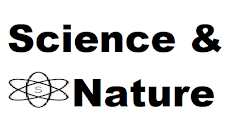In a astronomical breakthrough, NASA's James Webb Space Telescope (JWST) has just released its first actual picture of a supernova—a milestone in our astronomical journey to the universe. The breathtaking announcement gives scientists their best look ever at one of the most energetic phenomena in the cosmos: the cataclysmic demise of a gigantic star.
A Cosmic Flash Caught in the Act
The picture, which was released by NASA in early June 2025, photographs a supernova in stunning clarity. The reason why this instant is so iconic is that the JWST captured the supernova while it was actually occurring—a remarkable achievement in observational astronomy. Whereas telescopes have photographed supernova remnants before, capturing one during explosion is like seeing a firework at the very instant it explodes.
Millions of light-years away in a far-off galaxy, the supernova shimmers as a stunning, blazing flower in the Webb photo. The JWST's sensitive infrared detectors unveil clouds of dust, gas, and energy that were not seen by earlier telescopes such as Hubble. These new observations enable astronomers to gain a better insight into the physics of star death and rebirth.
Why This Matters
Supernovae are not only celestial fireworks—they seed the universe with heavy elements such as iron, gold, and uranium. From the calcium in our bones to the oxygen we inhale, it was all smelted within the cores of old stars and cast into space through these cataclysmic supernovae.
"Observing a supernova in real time makes it possible to learn about how those elements are created and spread out," says Space Telescope Science Institute astrophysicist Dr. Mia Gonzales. "It's like being front-row seats to the universe recycling its material."
What the Webb Telescope Saw
The newly revealed image reveals the outer layers of the star being violently hurled into space, creating glowing clouds of ionized gas. In the infrared, Webb saw shock waves and intricate structures that provide scientists with clues on the size, makeup, and even the last moments of the star.
From NASA, the supernova falls into a class called Type II, which happens when a very large star—at least eight times larger than our sun—collapses under gravity and then detonates. The intense burst outshines entire galaxies briefly and can be seen throughout the universe.
The Power of Infrared Vision
The James Webb Space Telescope is specifically designed for this type of discovery. Optical telescopes are hampered by dust and distance, but JWST employs infrared light to look through clouds in space and reveal the universe's most secreted events. This allowed for its ability to notice the beginnings of the supernova that would have otherwise been undetectable.
With its gold-coated 6.5-meter mirror and extremely sensitive instruments, Webb has already outshined expectations within its first couple of years of operation. From glimpsing into the atmospheres of exoplanets to unveiling ancient galaxies from the era of creation, this telescope is redefining everything we understand about space.
What's Next?
Researchers are now making plans for follow-up observations to track the development of the supernova with time. From monitoring changes in brightness, temperature, and chemistry, astronomers wish to build more accurate models for stellar evolution and learn about the life cycle of matter in the universe.
More supernovae are expected to be discovered as the JWST continues its mission. With its unique vantage point and powerful tools, this telescope is poised to usher in a golden age of cosmic discovery.
As Dr. Gonzales puts it, “This is just the beginning.
With Webb, we’re not just observing the universe—we’re watching it unfold in
real time.”




.jpg)
0 Comments